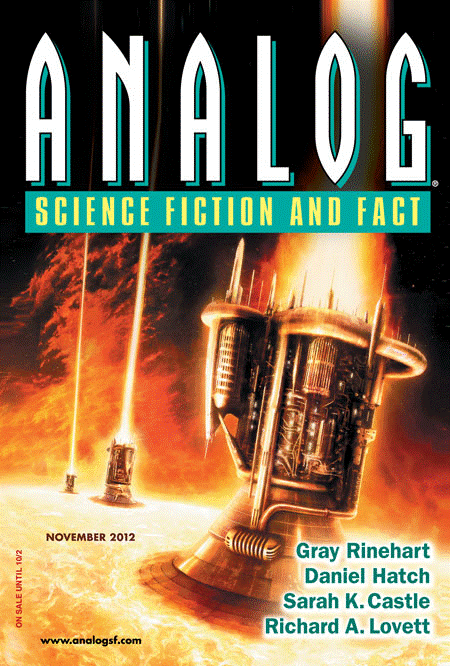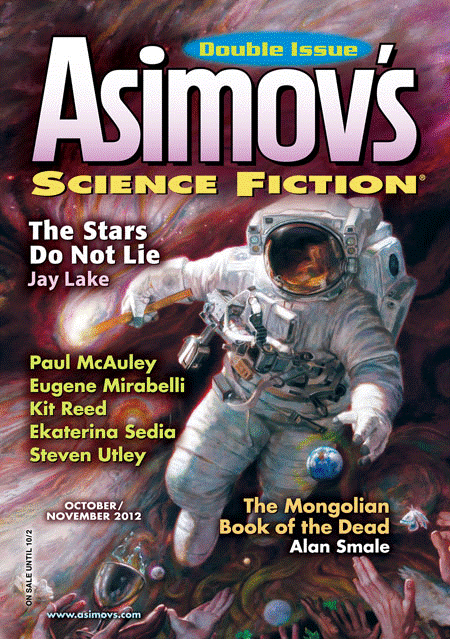Yes, that really is my name on the cover of the November issue of Analog Science Fiction & Fact, which goes on sale next week.
And yes, I am still stunned every time I look at it:

It seems so strange, seeing my name there. I am honored, and humbled, and overwhelmed.
My novelette, “SEAGULLs, Jack-o-Lanterns, and Interstitial Spaces,” began as my entry in the Codex Writers Group Halloween contest. The story prompt was a set of quotes from five different sources, following a meme that had been making the rounds during National Book Week of selecting certain lines from specified pages of nearby books. Just to be obstinate, I used each of the sources in some way, even if only a phrase or a name.
Finally, yes, I am also stunned because the story has a fetching illustration by Vincent Di Fate, one of the all-time-great SF&F artists. Last year he was inducted into the Science Fiction Hall of Fame, which is part of the EMP Museum in Seattle.
The whole table of contents is listed in this SFScope post.

















